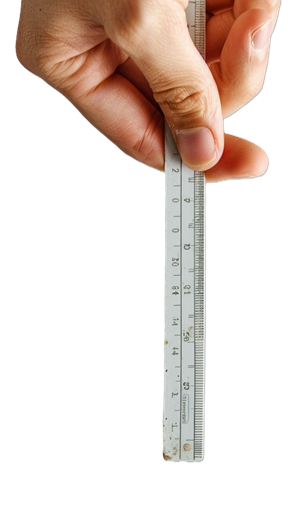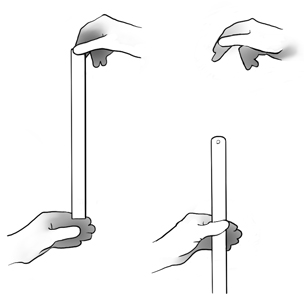
Using the Scientific Method to Measure Response Time
Introduction: The purpose of this exercise is to introduce the scientific method, experimental design, and data analysis to explore response times in a group of test subjects.
The scientific approach is a powerful method of understanding the natural world because it is founded on observation. To be successful, observations must be systematic and objective. The method of doing these observations can be broken down into several steps that will help you design an experiment.
Step 1: Ask a Question
As a group, determine the question you want to answer. We will be using apps , programs, or physical tests to measure response time, but it is up to the group to determine what they will be testing. You will only be testing ONE variable.
Sample questions:
How does reaction time differ in men versus women; older or younger people; athletes or musicians?
How is reaction time affected by additional distractions (music, conversation)?
How is reaction time affected by the consumption of caffeine?
Will using the non-preferred hand affect reaction time?
Will closing one eye affect reaction times?
Your group can choose one of the sample questions above or create your own question. (Check with your instructor before proceeding.)
Step 2: Design the Experiment
In any experiment, you want to clearly define the factors that you will manipulate and what you will be measuring. The experiment should also include variables that you attempt to hold constant, such as temperature or time of day.
Consider how you will answer your question from Step 1.
Sample Designs:
Test one group against another group of experiment on the same reaction time test
Compare the reaction times of the same people under two different conditions, like after exercise.

A test subject attempts to grab the ruler as it is dropped, the number on the ruler where the fingers grasp it can be used to judge reaction time.
Digital reaction time tests are easy to find with a google search. You can also install an app on your phone that can measure reaction time (useful if you want to test subjects outside of class).
Online Applications for Testing Reaction Time
Sheep Dash | Stoplight Test
Reaction Time Test at Mathisfun.com
Reaction Time Test at Healthysleep.com
The MultiTask Test at OpenSite
Describe your experiment below by answering each question clearly.
A) Who will be your test subjects? Will you test the same people more than once? Will you go outside the class to find volunteers? (Make sure you have enough subjects to draw conclusions)
B) How will you test the subjects? (Include specific name of app, page, program, or describe the physical test)
C) How will you gather data? Will you take averages? How will change the environment to answer the question, and how will you keep other variables constant?
D) How will you display the data? Will you design a chart, or a table. Make a rough sketch below of the type of graphic you will use to organize the data you collect. (You can adjust this later, just have an idea for now)
E) How long will it take you to gather this data? Are there any safety or ethical considerations you will need for your volunteers?
Reread each answer above and make sure that you are very clear in your language and design so that your instructor understands exactly what you will be doing. At this point, turn in this paper for instructor approval before continuing.
Step 3: Collect Data
At this stage, your group should collect data from classmates and volunteers. Determine how you will collect the data as a group and organize it into a table or chart. You will probably need to compile the data from many sources.
Step 4: Analyze Data
Answer the following questions regarding your experiment and data.
A) What conclusions can you draw from the data? Do you accept or reject your hypothesis?
B) What problems occurred during the experiment with data collection or design? How could you improve the experiment?
Related Resources
Investigation: What Are the Processes of Science - students design an experiment about lung capacity; requires spirometers, AP Biology
Carbon Dioxide Production - determine how activity changes the amount of CO2 expelled in breath
Measuring Lung Capacity - graphing and data gathering using balloons to measure vital capacity